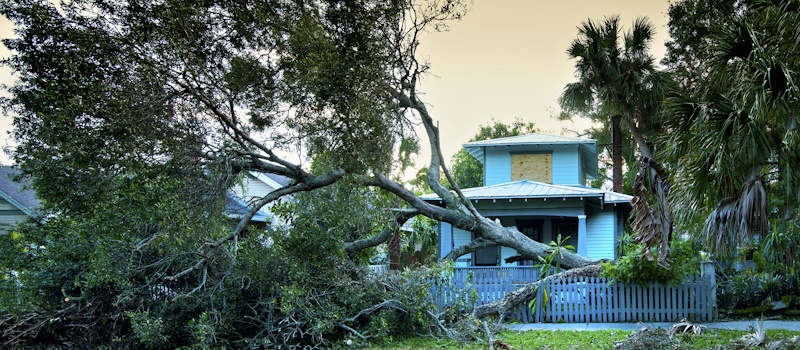Hurricane Aftermath: The Cleanup of Tree and Fence Damage
Hurricane Aftermath: The Cleanup of Tree and Fence Damage

Hurricane Aftermath: The Cleanup of Tree and Fence Damage
Hurricanes leave a wake of destruction, often resulting in a chaotic aftermath marked by debris-strewn landscapes, damaged structures, and uprooted vegetation. Afterward, there is a critical need for diligent and organized cleanup efforts to restore order, ensure safety, and aid in the recovery process.
Trees and fences are often among the biggest components of hurricane cleanup efforts, typically requiring significant attention. Fallen trees, branches, and large bushes can obstruct roads, damage homes, and entangle power lines. Uprooted fences and those with weakened posts pose safety risks and impede access.
Clearing fallen trees demands precision to prevent further damage and injury. Similarly, damaged fences require careful assessment before repairs commence. Professionals may be needed for complex cases. Ensuring the safe removal of trees and efficient restoration of fences is crucial for post-hurricane recovery, for both safety and the restoration of affected areas.
General Safety for Cleanup
When working to clean up trees and fence damage following a hurricane, it's essential to follow some general safety rules. Serious injuries and deaths indirectly caused by natural disasters occur during the cleanup stage. Yale Climate Connections reports indirect deaths—stemming from issues such as electrocution incidents and recovery efforts—typically outnumber the deaths caused directly by hurricanes.
Here are some general safety rules to bear in mind during hurricane cleanup:
- Don't work alone when cleaning up or working to restore an area after a natural disaster.
- Don't overexert yourself, especially in hot temperatures, and know the signs of heat exhaustion.
- Take frequent breaks.
- Stay hydrated.
- Lift with your legs to protect your back when moving heavy things (such as water-laden materials).
- Wash your hands frequently, especially when dealing with wet or contaminated items.
- Keep a first aid kit stocked and on hand.
- Wear protective equipment appropriate for the job, such as work gloves and closed-toe shoes.
Tree Cleanup After a Hurricane
After a hurricane, trees and branches often need to be cut down and taken away. Trees can fall on homes, block walkways, damage property, and more. Fallen branches and uprooted trees can hide hazards such as downed power lines and unstable structures.
To ensure safety, start by surveying the area for any dangers, such as hanging branches and nearby power lines. Wear appropriate protective gear, including goggles and helmets. Be careful when using powerful tools, such as chainsaws, by consistently following manufacturer instructions. Work from the outer edges toward the trunk to avoid shifting weight when removing branches. If uncertain, consult a professional tree removal service to minimize risks and provide a secure cleanup process.
Fence Cleanup After a Hurricane
Debris and wind damage can weaken fence structures, making them unstable. Nails, splinters, and sharp metal may be hidden in the wreckage. When clearing debris, wear sturdy gloves, boots, and protective clothing to avoid injuries. Use tools like hammers and pry bars carefully, avoiding excessive force that might cause further damage.
Prioritize personal safety by examining any fence's stability before attempting repairs. If in doubt, consult professionals to address issues and ensure safe cleanup.
